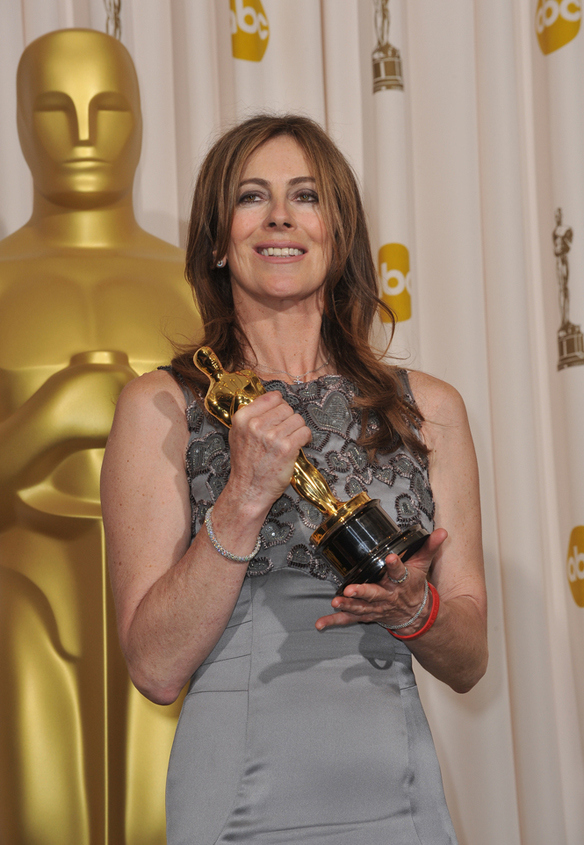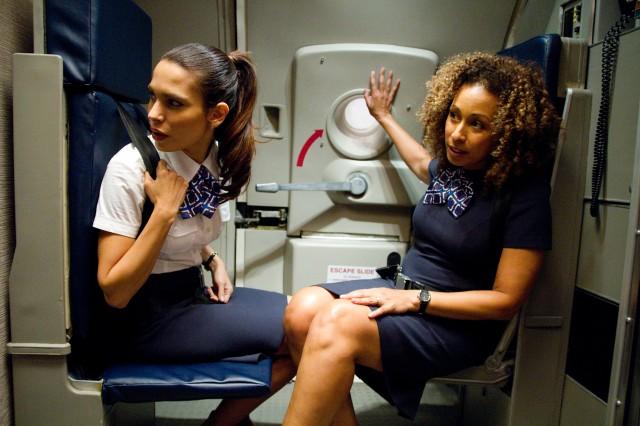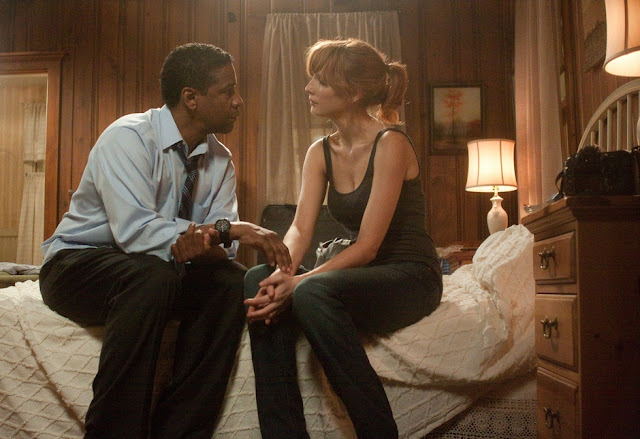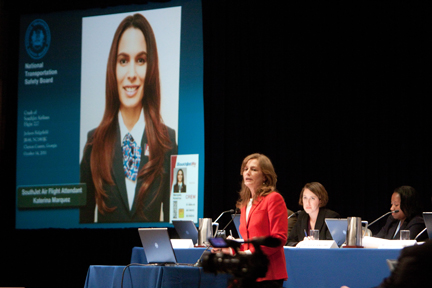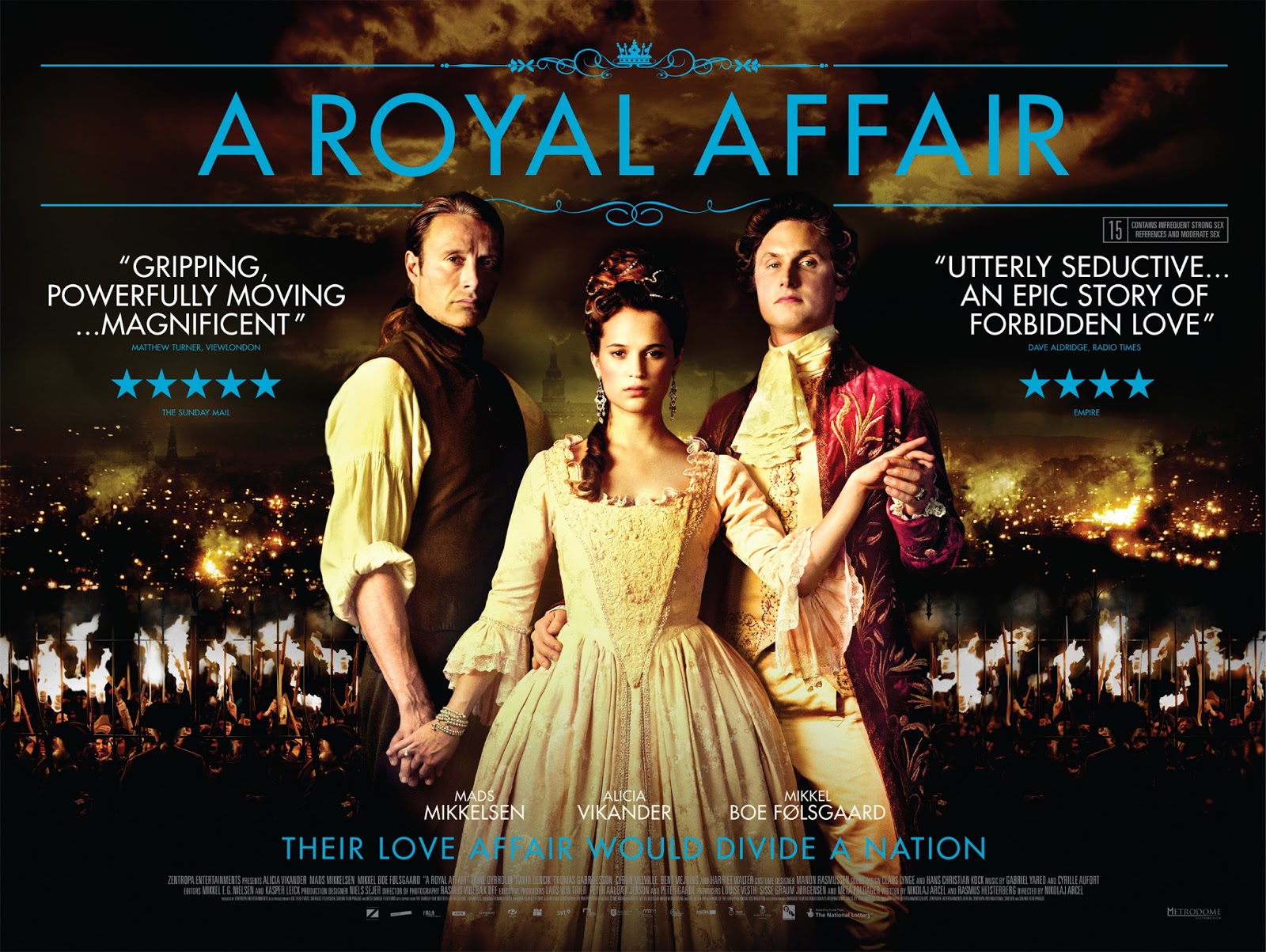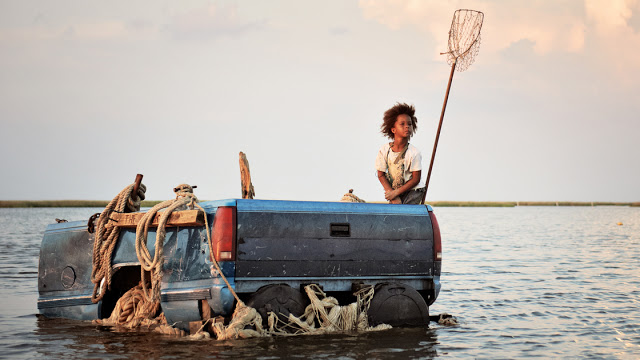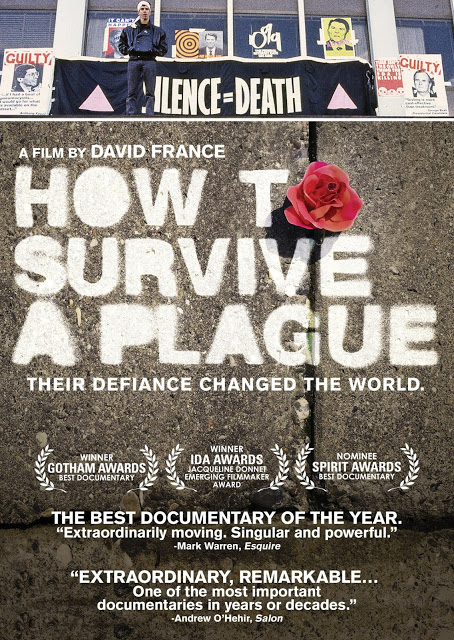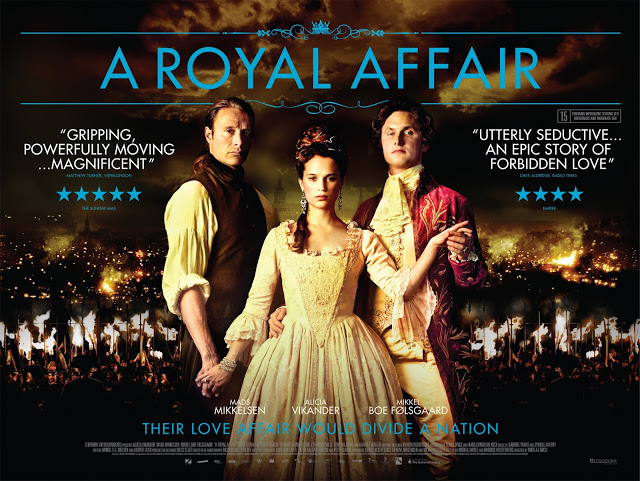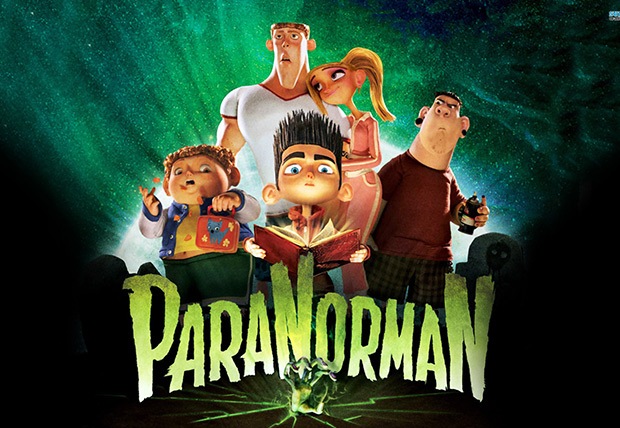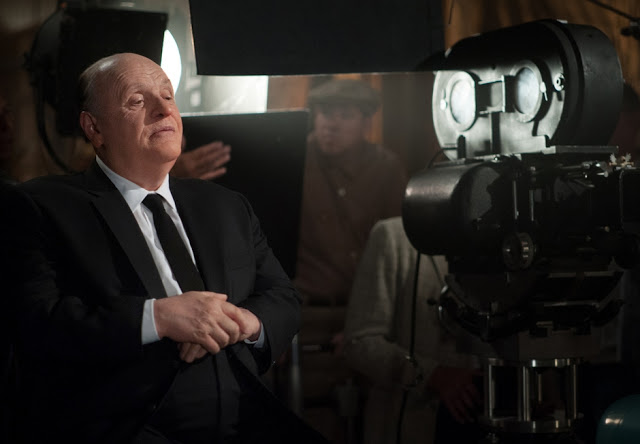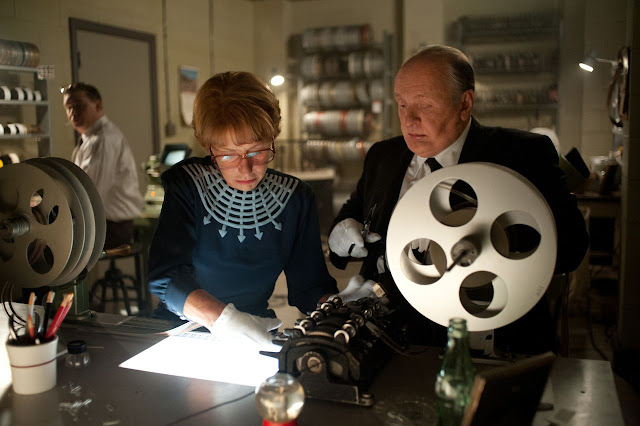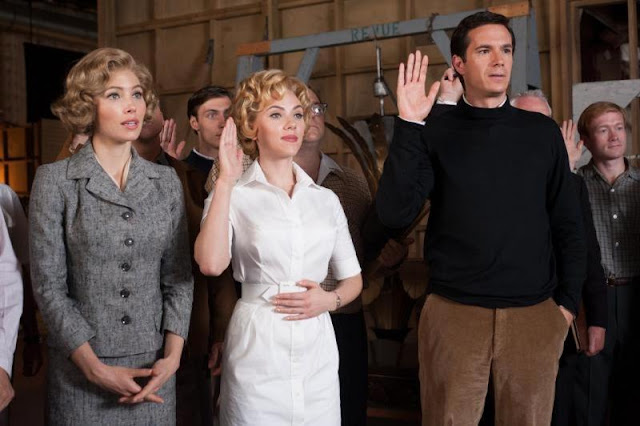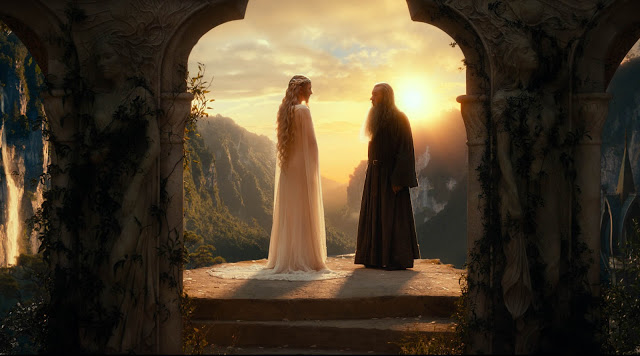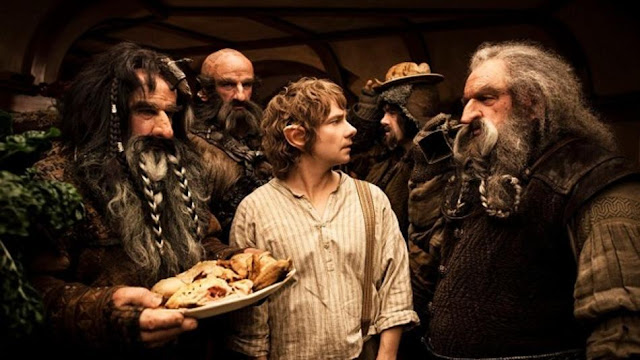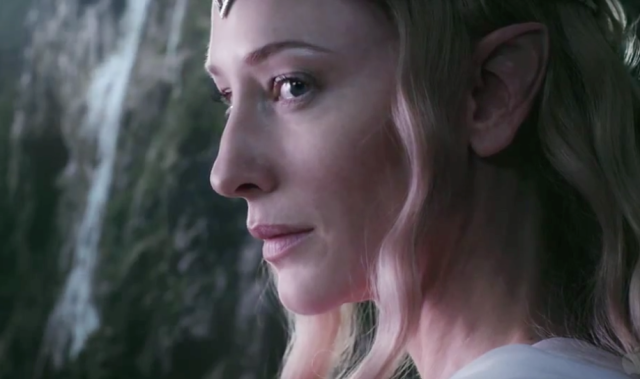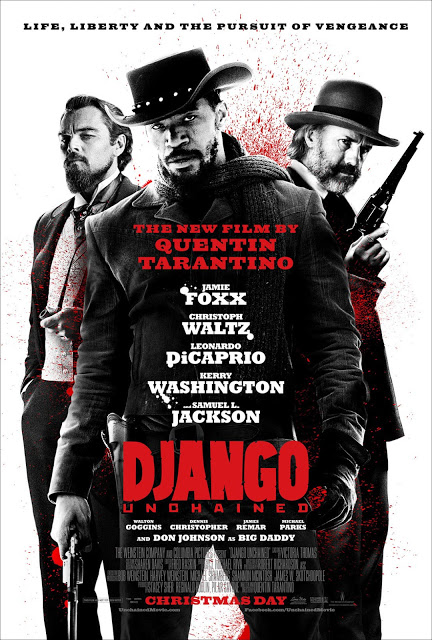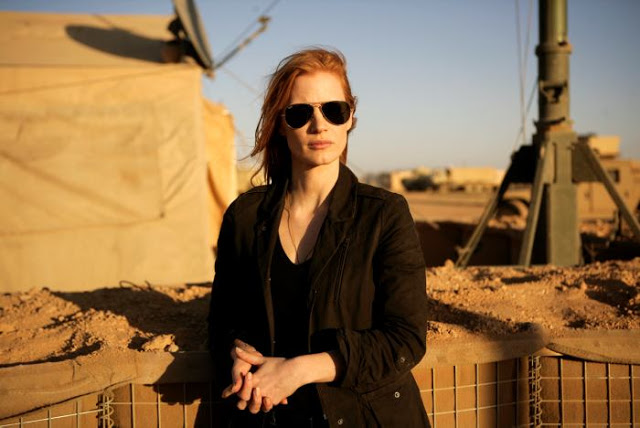 |
| A Royal Affair (2012) |
Anyone reading the synopsis of A Royal Affair wonders if it will be more of the same. I mean what else can be said about a high-born woman trapped in loveless marriage to an awful unsophisticated idiot who finds love in the arms of an enlightened dashing sensitive man? (Looking at you Keira Knightley, in The Duchess or let’s be real, any movie about Marie Antoinette). However it is saved by actually not being about the affair but a story of the fight for enlightenment and freedom. These ideals are at the center of Danish director Nikolaj Arcel’s film, which is based on the lives of Danish King Christian VII, his wife and Queen Caroline, Mathilde, and their royal physician, Dr. Johan Streunsee.
The protagonist is Caroline Mathilde (Alice Viksander), who is the primary orator of the movie. We find her in exile in an undescribed place where she begins to write her story to her children. Caroline, who is English by birth, is betrothed at a young age to the equally young King Christian VII (Mikkel Følsgaard) of Denmark. Though the story does not go into great detail about her family origin, she is the youngest child of the then-ruling British royal family.
Being a young woman of royal birth, the best that women of Caroline’s station can hope for is a powerful marriage, with love as a luxury. This expectation is driven home in the scene where Caroline frets over whether her husband should like her. Her mother, actually trying to be very kind, says, “Dear, if you are able to get your husband into your bed on your wedding night, you will be a great success.”
And so with that Caroline’s married life begins as she is sent to a foreign land she has never visited to a place with a language she barely speaks. King Christian the VII as a husband leaves much to be desired. He is relatively childish and awkward but, beyond that, something is mentally off about him. His mental instability is made apparent in a scene where King Christian’s stepmother, the Queen Dowager Juliane Marie (Trine Dyrholm), warns him his wife’s prettiness and artistic abilities can eclipse his reign. Very suddenly, Christian moves from happiness to anger, as he takes his insecurity out on Caroline in front of their guests and demands that she “move her fat thighs” away from the piano she is playing for guests. A real Prince Charming, to be sure. Caroline, justifiably, is horrified into shocked silence as is everyone else in the room. The King’s mental capability and his mercurial nature becomes an important player in the film later.
The following wedding night scene is so painfully awkward you can’t help but feel sorry for Caroline right away. Thankfully, the filmmaker saves us from the rest of the inartful consummation by fading to black. The unhappy marriage is summed up very quickly in the next few scenes as her only solace is her friendship with lady-in-waiting, Louise Von Plessen who is sent away eventually. Christian VII is revealed to not only be verbally abusive but a heavy drinker, carouser and frequenter of Copenhagen’s finer houses with ladies of ill-repute. All of which rightfully disgusts and angers Caroline but she endures with relative matriarchal silence. Eventually, Caroline completes her most important royal duty and becomes pregnant with her first child and heir to the throne Frederik.
Around this time, enters Dr. Johan Struensee (Mads Mikkelsen, a former Bond villain in 2006’s Casino Royale!). What is interesting about Johann is that besides being a doctor he is also a man of the Enlightenment movement that is sweeping the continent. A well-read man, Johann bonds with the king over their mutual love of Shakespeare. It is for this major reason he is selected to be the royal physician and then elevated to overall trusted adviser.
King Christian’s irritation with his wife’s continued moodiness over their marriage leads to him encouraging Johann to give his wife a checkup to find out what exactly ails her, so she can be more “fun” in the King’s words.
In her own right, Caroline has an excellent education and it is revealed before she came to Denmark that she also enjoyed the writings of Voltaire, Rousseau, and other idols of the Enlightenment. Her bond forms with Johann, whom she has regarded with suspicion and complicit in her husband’s behavior, when she realizes he has smuggled and hidden many of these banned writers’ books into Denmark. In Johann, Caroline finds someone who can understand her, and in her Johann instantly respects a woman he greatly underestimated as clearly just another pretty and mindless royal wife. The bond is further cemented when Johann convinces the King and Queen that their son and heir, Frederic,k needs to be vaccinated from smallpox, something never done, but Johann successfully does also gaining him admirers at Court.
While Johann and Caroline eventually enter into the expected royal affair, the story becomes more about what their illicit partnership cultivated. Johann often accompanies the King to his Council meetings where the conservative Council men enact oppressive rulings of the state of Denmark. Due to his clear mental incapabilities, the Council treats the King like a puppet. And Johann and Caroline are both frustrated by the Council’s anti-Enlightenment, conservative, aristocratic policies of censorship and the unequal rights of men etc. It is Caroline who reminds Johann of his power over the impressionable King. And it is then that the light turns on for Johann of how the King can be used to promote a greater good.
And so it unfolds, King Christian, through the influence of Caroline and Johann’s affair, becomes the arbiter of the Enlightenment movement in Denmark. He abolishes the conservative Council, establishes freedom of the press, ends prison torture, etc. Denmark becomes a pioneering country in freedom even at the notice of Voltaire himself. Like Caroline and Johann, strangely even King Christian appears most happy during this time, as Johann is careful with his power over the King encouraging him to think actively and use his power as king but for enlightenment ideals. The political intrigue and fight for power is at the heart of this film as both Caroline and Johann fight for control from the conservative council with the King as their proxy.
Like all movements challenging the status quo, the conservative Council challenges the ideals of the Enlightenment celebrated by Caroline and Johann and their informal salon they have gathered around them. For US viewers the conservative Council’s arguments against social reforms is very familiar.. “Where is the money?” “Must be paid for” etc. And certainly viewers around the world can related to the ideals of equality and freedom. The unfolding chess match, with the mentally unstable King as its chess piece, has its consequences finally as the conservative council reaches a major checkmate against Queen Caroline and Dr. Streunsee. Caroline and Christinan’s enemy at the court, Queen Dowager Juliane Marie discovers her infidelity through the questioned birth of Caroline’s second child, Louisa.
The consequences of political infighting and manipulation even for a greater good plays itself out in a less than idealistic fashion and as a result we find Caroline back as we did at the start of the movie, in exile, penning the final pieces of her story to her children, in hopes they at least understand, if not accept her motivations. What the children do with that knowledge makes for an interesting ending.
This movie is Oscar worthy and passes the feminist smell test because A) Despite the title has “affair” in it has surprisingly little gratuitous sex in it, especially at the expense of Caroline. B) She controls the narrative and not someone else which is often the case with women who end up in her situation (read: Henry VIII’s unlucky wives) C) She is an equal partner in the Enlightenment discussion with Johann. D) it is less about an affair and is more about the coming together of two unlikely revolutionaries whose intellectual partnership became a major historical turning point for a nation’s history and political system.
While Alice Viksander didn’t carry a ton of emotional range as Queen Caroline she does command your respect, and your interest in the movie to the very end.
———-
Atima Omara-Alwala is a political strategist and activist of 10 years who has served as staff on 8 federal and local political campaigns and other progressive causes. Atima’s work has had a particular focus on women’s political empowerment & leadership, reproductive justice, health care, communities of color and how gender and race is reflected in pop culture. Her writings on the topics have also been featured at Ms. Magazine, Women’s Enews, RH Reality Check.
